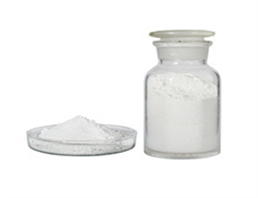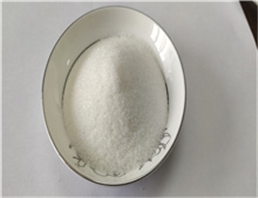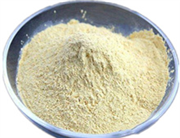hydrochloric acid
Use of Xylazine Hydrochloride Xylazine is an α2 type of adrenergic receptor agonist. Clonidine analogs are adrenergic receptor alpha 2 agonists. Xylazine has recently become a recreational drug, especially in Puerto Rico [1]. Taking xylazine (0.17 mg/kg body weight, diluted to a volume of 10 ml with 0.9% NaCl) induced local analgesia for approximately 2.5 hours without significant side effects. Higher doses of xylazine caused mild hindlimb ataxia. The administration of lidocaine caused a similar duration of analgesia, accompanied by severe hindlimb ataxia (incidence 100%). We concluded that xylazine given by epidural injection can produce safe and effective perineal analgesia in horses [2].
Biological activity of xylazine hydrochloride
Description: Xylazine hydrochloride is an α2 adrenergic receptor agonist. Target: The adrenergic receptor Xylazine is a drug that can be used for sedation, anesthesia, muscle relaxation and analgesia in horses, cattle and other non-human mammals. Clonidine analogs are adrenergic receptor alpha 2 agonists. Xylazine has recently become a recreational drug, especially in Puerto Rico [1]. Taking xylazine (0.17 mg/kg body weight, diluted to a volume of 10 ml with 0.9% NaCl) induced local analgesia for approximately 2.5 hours without significant side effects. Higher doses of xylazine caused mild hindlimb ataxia. The administration of lidocaine caused a similar duration of analgesia, accompanied by severe hindlimb ataxia (incidence 100%). We concluded that xylazine is safe to inject epidurally
Chemical and physical properties:
Density: 1.15 g/cm3
Boiling point: 334.2ºC at 760mmHg
Melting point|: 150-164°C (December)
Molecular formula: C 12 H 17 ClN 2 S
Molecular weight: 256.795
Flash point: 155.9℃
Accurate quality: 256.080109
Public Service Advertisement: 49.69000
Logarithm: 3.51880
Steam pressure: 0.00013mmHg at 25°C
Storage condition: −20°C
Chemical name: 4H-1,3-thiazine, 5,6-dihydro-2-(2,6-xylyl)-, monohydrochloride
Molecular formula: C12-H16-N2-S.Cl-H
Molecular weight: 256.82
Health hazard data:
Acute toxicity data
Test type: TDLo-lowest published toxicity dose
Exposure route: intramuscular
Species observed: human-human
Dose/Duration: 14 mg/kg
Toxic effects: Behavior-unconscious heart-changes in electrocardiogram, specific effects on lungs, chest cavity or breathing cannot be diagnosed-other changes
Reference: CTOXAO Clinical Toxicology. (New York, New York) V.1-18, 1968-81. For information about publishers, see JTCTDW. Volume (issue)/page/year: 15,281,1979
Test type: LD50-lethal dose, killing rate up to 50%
Exposure route: intramuscular
Species observed: rodent-mouse
Dose/Duration: 109 mg/kg
Toxic effects: Except for lethal dose values, no detailed information on toxic effects is reported
Reference: ZYYZEW Chinese Medicinal Diet Study Yu Du Pharmaceutical Journal. (No. 27 Taiping Road, Chinese Pharmacological Society, Beijing 100850) V.1-1986-Volume (Volume)/page/year: 9,96,1995
Test type: LD50-lethal dose, killing rate up to 50%
Exposure route: intramuscular
Species observed: Mammals-Dogs
Dose/Duration: 47 mg/kg
Toxic effects: Except for lethal dose values, no detailed information on toxic effects is reported
Reference: CTOXAO Clinical Toxicology. (New York, New York) V.1-18, 1968-81. For information about publishers, see JTCTDW. Volume (issue)/page/year: 15,281,1979
Test type: LD50-lethal dose, killing rate up to 50%
Exposure route: intramuscular
Species observed: Rodent-Guinea pig
Dose/Duration: 10 mg/kg
Toxic effects: Except for lethal dose values, no detailed information on toxic effects is reported
Welcome to contact us and look forward to cooperating with you!!!
contact details:
Whatsapp / Skype / WeChat: +8613373414058
Email: gantuo02@cngantuo.com

 China
China






